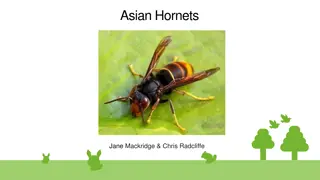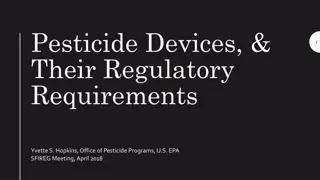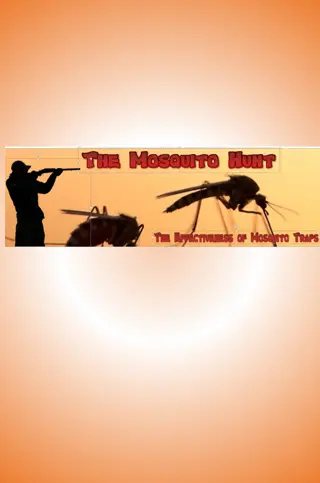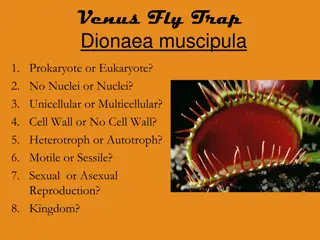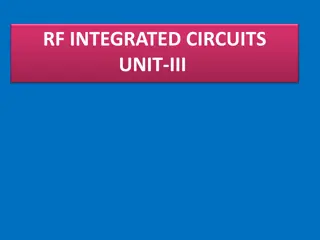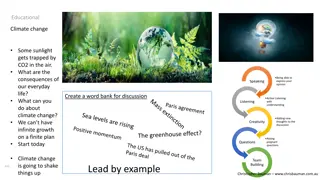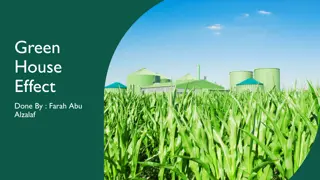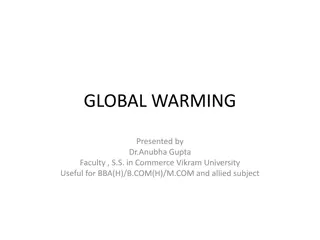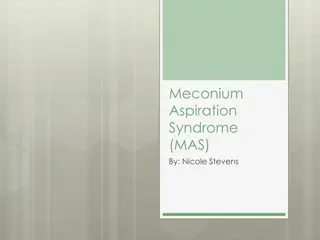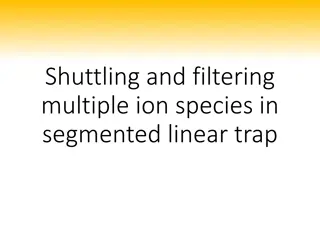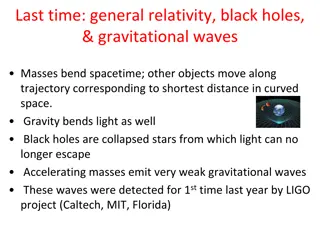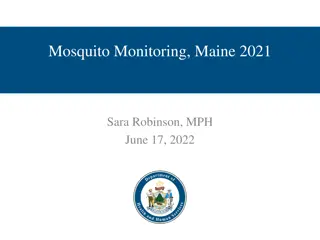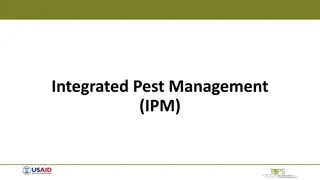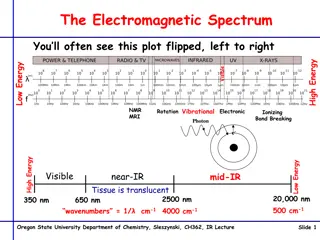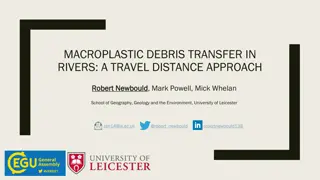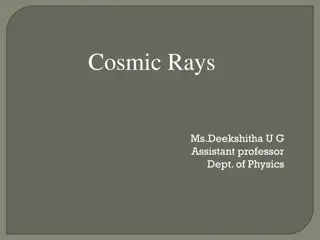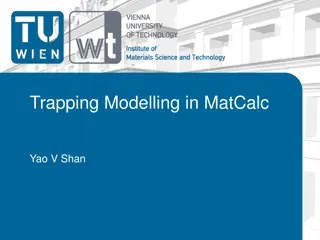Asian Hornets
Explore the differences between Asian and European hornets, learn how to identify Asian hornets, understand their life cycle, monitor designs for detection, and know what to do if you encounter them. Discover essential information on Asian hornet sightings, nest behavior, and effective trapping tech
0 views • 9 slides
Overview of Fish Harvesting, Handling, and Transportation
Fish harvesting is crucial for providing valuable animal protein, with India being a key player in fish production. Fisheries are categorized into fin and non-fin types, with capture and culture fisheries being common practices. Capture fisheries involve natural species recruitment in sea and inland
2 views • 16 slides
Understanding the Thyroid Gland: Functions and Hormone Synthesis
The thyroid gland is a vital endocrine gland located below the larynx, responsible for producing thyroid hormones essential for regulating metabolism. This gland consists of follicles lined with follicular cells, producing thyroglobulin and thyroid hormones T3 and T4. Iodine plays a crucial role in
0 views • 40 slides
Understanding Regulatory Requirements for Pesticide Devices
Pesticide devices, as defined by FIFRA, play a crucial role in trapping, destroying, repelling, or mitigating pests or plant and animal life. While not required to be registered with the EPA, these devices are regulated under FIFRA sections 2(q)(1), 7, and 8, with specific labeling and packaging req
0 views • 10 slides
Investigating Mosquito Attractants for Effective Trapping in Queens
Mosquitoes are vectors for spreading diseases, prompting a study to test the effectiveness of various attractants in trapping them. Results indicate carbon dioxide and lights are effective attractants, while KCl did not attract mosquitoes. The study aims to develop targeted traps for efficient mosqu
0 views • 4 slides
The Fascinating Venus Fly Trap - A Carnivorous Plant
The Venus Fly Trap, scientifically known as Dionaea muscipula, is a unique carnivorous plant found in the southern swamps of the US. It is a eukaryotic, multicellular autotroph that thrives in poor, nutrient-deficient soils by capturing insects for essential nutrients like nitrogen. Its trapping mec
0 views • 12 slides
Understanding Renal Block: Drugs, Excretion, and Treatment Essentials
Renal block plays a crucial role in drug excretion, with processes like glomerular filtration and tubular secretion affecting drug elimination. Factors like blood flow, physiochemical properties, and urine pH influence renal excretion of drugs. Competition between drugs for transporters can have ben
0 views • 10 slides
Understanding Noise in RF Integrated Circuits: Thermal and 1/f Noise
Noise, an unwanted input, limits a system's ability to process weak signals. Sources of noise include random noise in resistors and transistors, mixer noise, undesired cross-coupling noise, and power supply noise. Thermal noise, caused by thermal agitation of charge carriers, is also known as Johnso
1 views • 49 slides
Taking Action on Climate Change Today
Our everyday actions contribute to climate change through CO2 trapping sunlight. It is essential to start making changes now, such as expressing opinions, active listening, creativity, and team building. Questions on emissions, social equity, and global strategies for change are crucial. The crisis
0 views • 5 slides
Understanding the Greenhouse Effect and Its Impact
The greenhouse effect is the trapping of the sun's warmth in a planet's lower atmosphere, primarily by greenhouse gases like carbon dioxide and water vapor. These gases absorb and re-emit infrared radiation, which leads to an increase in temperatures. While carbon dioxide and water vapor are signifi
1 views • 13 slides
Understanding Global Warming and the Greenhouse Effect
Scientists attribute the observed global warming trend to human activities that enhance the greenhouse effect, trapping heat in the atmosphere. The greenhouse effect, crucial for life on Earth, involves gases like water vapor and methane that contribute to warming. Nitrous oxide, another potent gree
0 views • 13 slides
Considerations for Bringing Back Native Birds in Nelson
Before embarking on trapping activities to support native bird populations in Nelson, it is essential to assess existing bird species, habitat requirements, trapping outcomes, space needed for populations, and surveillance of introduced predators. Understanding these factors is crucial to successful
1 views • 19 slides
Understanding Meconium Aspiration Syndrome (MAS) in Newborns
Meconium Aspiration Syndrome (MAS) is a condition where a newborn aspirates meconium, the first substance discharged from the GI tract. This primarily affects term or post-term infants and can lead to airway obstruction, gas trapping, chemical pneumonitis, and PPHN. Risk factors include hypoxia and
0 views • 31 slides
Understanding Shuttling and Filtering of Multiple Ion Species in Segmented Linear Trap
This content delves into the intricate processes of shuttling and filtering multiple ion species within a segmented linear trap. It explores techniques such as RF filtering, DC potentials, mass filtering, and trap depths in the context of ion manipulation. Discussions also touch on ion crystal phase
0 views • 13 slides
Analysis of Mosquito Collection Data: Net Weight, Water Coating, and Model Fitting
This analysis includes tables detailing the weight of batch 13 nets, mean water and insecticide for coating the net, model fitting of Poisson models for mosquito count dataset, and modeling fitting of ZIP and ZINB models for trap collection data. The tables provide valuable insights into net propert
0 views • 5 slides
Understanding Obesity Hypoventilation Syndrome: Diagnosis and Mechanisms
Obesity Hypoventilation Syndrome (OHS) is a condition characterized by hypoventilation during sleep due to obesity-related changes in the respiratory system. Diagnosis requires a high index of suspicion and involves criteria such as BMI>30, daytime hypercapnia, and sleep-disordered breathing. The pa
0 views • 21 slides
Insights into General Relativity, Black Holes, and Gravitational Waves
Masses bending spacetime, black holes trapping light, and the detection of gravitational waves by LIGO have revolutionized our understanding of the universe. From Eddington's 1919 experiment confirming light bending to Hubble's discovery of an expanding universe, key milestones in cosmology have res
0 views • 24 slides
Mosquito Monitoring in Maine 2021: Key Findings and Funding Overview
The Maine Center for Disease Control and Prevention conducted mosquito monitoring in 2021 across various counties and towns, testing for West Nile Virus and Eastern Equine Encephalitis. Results showed no positive cases in mosquito pools but identified individuals with arboviral illnesses. Funding ch
0 views • 6 slides
Understanding Integrated Pest Management (IPM)
Integrated Pest Management (IPM) is a comprehensive approach that utilizes various methods to control pest populations effectively while minimizing harm to human health and the environment. IPM involves strategies such as monitoring, identification, trapping, inspection, sanitation, layout and desig
0 views • 73 slides
Understanding Infrared Spectroscopy: From Molecules to Energy Absorption
Delve into the world of infrared spectroscopy, exploring the electromagnetic spectrum, vibrational energy, and molecular interactions in the gas and liquid phases. Discover why certain molecules absorb infrared energy while others don't, and learn about the significance of greenhouse gases in trappi
0 views • 15 slides
Macroplastic Debris Transfer in Rivers: A Travel Distance Approach
Existing methods for studying plastic transport in rivers often overlook displacement and storage processes. This study presents empirical data on macroplastic tracer transport in a river reach, along with a numerical model to predict travel distance distributions. Tracer experiments using plastic b
0 views • 6 slides
Understanding Cosmic Rays: Types, Effects, and Theories
Cosmic rays are high-energy radiation particles originating from outer space, bombarding Earth's atmosphere. They can be classified based on penetration power and experimental observations. The intensity of cosmic rays varies with latitude, altitude, and direction. The Van Allen radiation belts surr
0 views • 9 slides
Exploring Mosquitoes and Public Health Initiatives
Delve into the world of mosquitoes and their role in spreading diseases like malaria, as well as the efforts by organizations like the CDC to control outbreaks through research and community involvement. Learn about the significance of trapping mosquitoes, the impact of infectious diseases, and the
0 views • 15 slides
Trapping Modelling in MatCalc: Understanding Gibbs Energy and Configurational Entropy
Trapping modelling in MatCalc involves studying the entrapment of atoms on lattice defects like solute atoms and dislocations. This process affects the system's energy and concentration, with parameters such as trapping enthalpy, nominal composition, and molar volume playing vital roles. By consider
0 views • 21 slides
